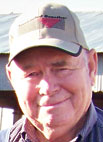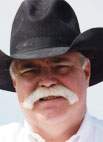
Just a short distance off Highway 65, near Damascus, Ark., you will find J Hall Farms, a rolling 1,003-acre farm owned by third generation farmer, Jerry Hall and wife, Jean. He was raised on the original farm, just a short distance from where their home is today. Both grew up in Damascus, graduated from South Side High School and went on to college.
Jerry said he and Jean got married, April 1958, during the ‘Eisenhower’s depression’ and told Jean they either had to go to Little Rock, Ark., to work or stay in Damascus and start a farm at the old home place. Jean said, “I told Jerry I could help on the farm,” where she would rather work. So farming it was – they started with 10 head of grade Holstein dairy cattle. Jerry said, “I started artificial insemination early on, when it came in dry ice and alcohol.”
In 1961, Jerry started buying land and purchased his parent’s house and moved the center part of it on the 106 acre farm he and Jean would make their home. Jerry and Jean built onto the house, adding bedrooms. He and Jean lived there with their four children for over 13 years. He later built a milk barn which was finished in September 1967. In 1968 Jerry started switching to registered Holstein cattle and had a dairy farm until 2002, when he sold the dairy herd.
In 2003 Jerry and Jean started a new venture in the commercial beef cattle business. It wasn’t easy in the beginning, beef cattle was quite a bit different than dairy cattle.
After all the unforeseen experiences with the grade cattle, Jerry saw an ad in a publication for registered Angus cattle for sale. He decided that might be a better route to take so he went to 19 different sales in Arkansas, Tennessee, Mississippi and Missouri, where he purchased about 100 cows and heifers and “made it work,” Jerry said. His knowledge is vast when it comes to cattle. In 2011 Jerry was inducted into the Arkansas Agriculture Hall of Fame.
Jerry has a plan that has always been fail proof for improving his herd, and said it will work for anyone starting out.
1. Start by culling the herd – get rid of the ones with a bad disposition (if a cow kicks Jerry more than twice he gets rid of it), – keep the ones with good utters, good strong feet and legs (wear feet evenly for longevity), a good wide muzzle, clear eyes (a sign of good health), ears that stand up (drooping ears are a sign they are not feeling well).
2. Accurate record keeping is the most valuable tool in determining the age of cattle and calving dates. Good records will show the calving interval, and have all the cattle identified (i.e. tattooed, tagged or branded). The records will allow recognition of the cows that are not calving, and to be culled.
3. Management is very important, it determines how well the cattle are taken care of – disease and worm control, good clean drinking water, minerals (salt primarily), how well the cows are taken care of nutritionally and how much protein. One piece of advice from Jerry is to always find out the ratio of ingredients when selecting feed for cattle.







